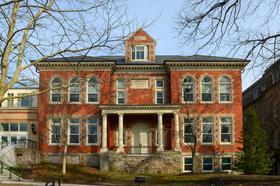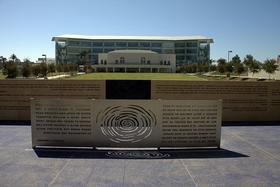One of the challenges facing many public schools today is how to keep crime out of schools so that learning can more effectively take place. To address this need, many school districts across the country have created their own police departments, with law enforcement officials that do everything from teaching anti-drug classes to making arrests when necessary. These officers work with students and faculty every day, developing a rapport with students and heading many potential problems off at the pass.
This video explains why police add to school safety.
However, severe budget cuts at many schools have forced some districts to take a closer look at these police departments, even cutting staff in some areas. These decisions have not gone over well with school administrators, who believe officers are essential for maintaining a safe environment where students can come to learn every day.
On the other hand, districts with budgets intact have found ways to use law enforcement officials even more effectively, adding to their list of responsibilities to expand safety to school grounds and beyond.
Let’s visit some of these police departments across the country to find out how they add value to the educational system.
Duvall County Public Schools Add Officers, Save Money
In Jacksonville, Florida, the sheriff's department is in the process of transferring many of the school officer resource duties to the Duvall Public School District. According to the Florida Times-Union, this move will triple the size of the school police force, while saving the district more than $1 million dollars. The change is pinpointed to be finalized by October of next year, which is when the contract between Duvall and the Sheriff's Office will expire.
During the transition, the school district plans to hire 59 school resource officers, including supervisors. The officers will work closely with school administrators, parents and students to promote a safe environment that is conducive to studies. Officers will teach anti-drug and anti-bullying classes, respond to complaints and make arrests when necessary.
The total cost of the program will be about $3 million, which is $1.2 million less than the district was paying the Sheriff's Office for similar services.
This video explains how Code Red lockdowns work in the Duvall School District.
Adding Traffic Violations to School Officers' Repertoire
In Tulsa and Miami, school officers are broadening their jurisdictions beyond school property. Both Tulsa Public Schools and Miami-Dade County are now allowing school officers to patrol the streets around the schools, writing traffic violations when necessary. This move will address the safety concerns for students walking and riding bikes to school, allowing officers to enforce slower speed limits that protect those students before and after school hours.
Dwight Jackson, assistant chief of the TPS Campus Police Department told Tulsa World, "It's a great change, but it's going to be a busy change for us." The schools have 20 commissioned police officers, 14 marked and four unmarked police vehicles to patrol the streets and issue violations when necessary.
In Miami-Dade, police statistics show that there were 722 car accidents near schools last year, according to a report at the Miami-Dade Schools Police Department website. This year, "Operation Slow Your Roll" will encourage drivers around the school to observe the reduced speed limit signs – or receive a traffic violation that could cost up to $600.
Miami-Dade Schools Police Chief Charles Hurley said on the website, "We've got a tremendous demonstration of collaboration to protect the children."
This video reports on the Miami School District hiring more police officers.
California Police Departments Not so Lucky
While other school districts are expanding the services of their campus police departments, many California schools are facing severe cutbacks in this area. At a time when crime is on the rise at some California schools, police officers on campuses are getting cut – much to the chagrin of the faculty and staff that work at these schools. San Diego Schools Police Chief Don Braun told KBPS that the shortage of officers has led to more crime in some schools.
"Violent crime in schools has risen 31 percent," Braun said. "Property crime has risen 12 percent. Weapons violations (have gone up) almost 8 percent." The school police in San Diego agree that more students are using deadly weapons in fights or assaults, and they expect the numbers to get even worse as more officers are cut from the school force. If cuts continue to be made, school districts will have to outsource police services, which could lead to a loss of public safety grant money.
Police on school campuses have a variety of responsibilities to fulfill, but their presence has led to safer schools and a higher quality of learning environment. For those districts facing budget and possible officer cuts, the results could be devastating and far-reaching.
Questions? Contact us on Facebook. @publicschoolreview















